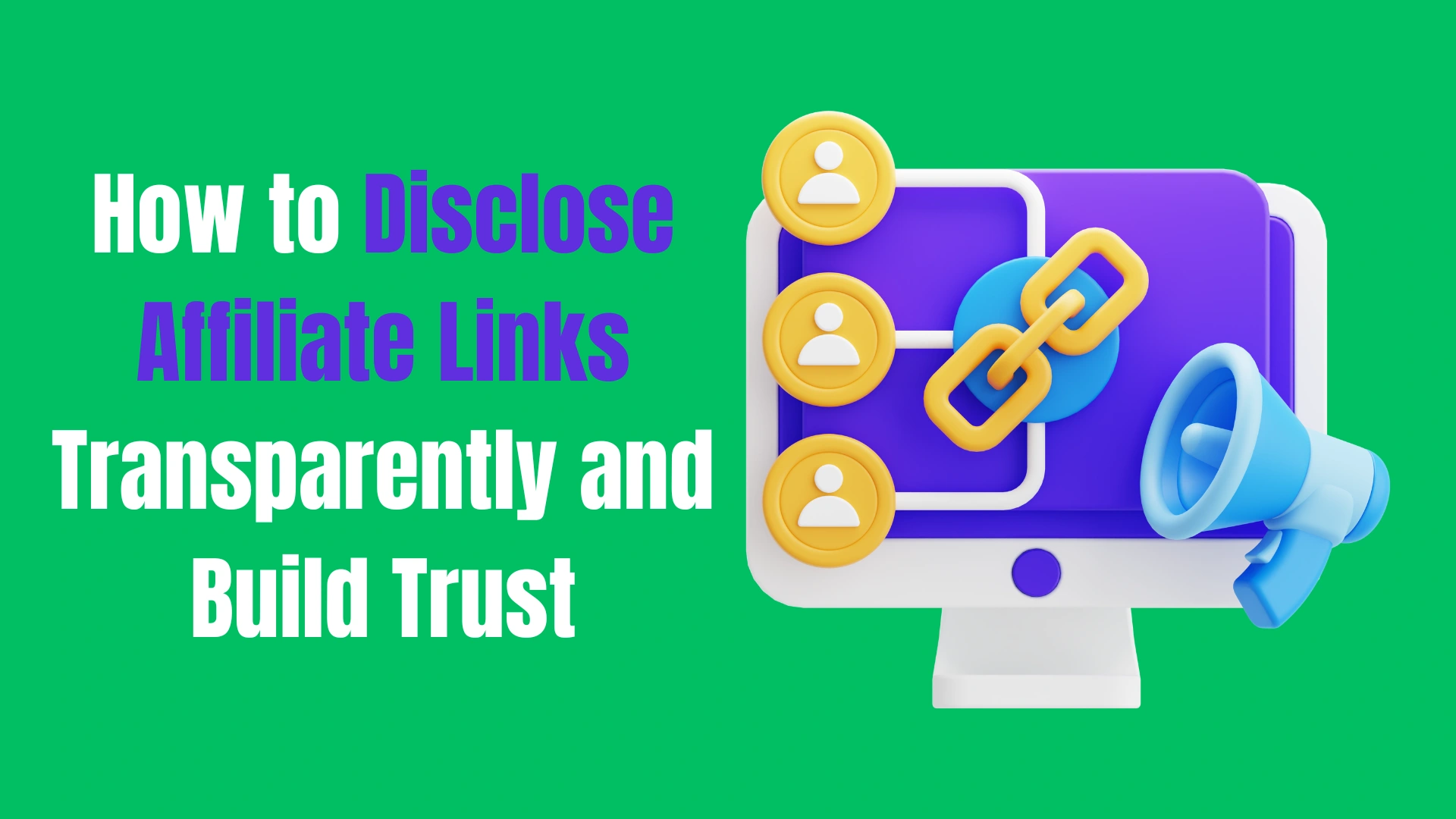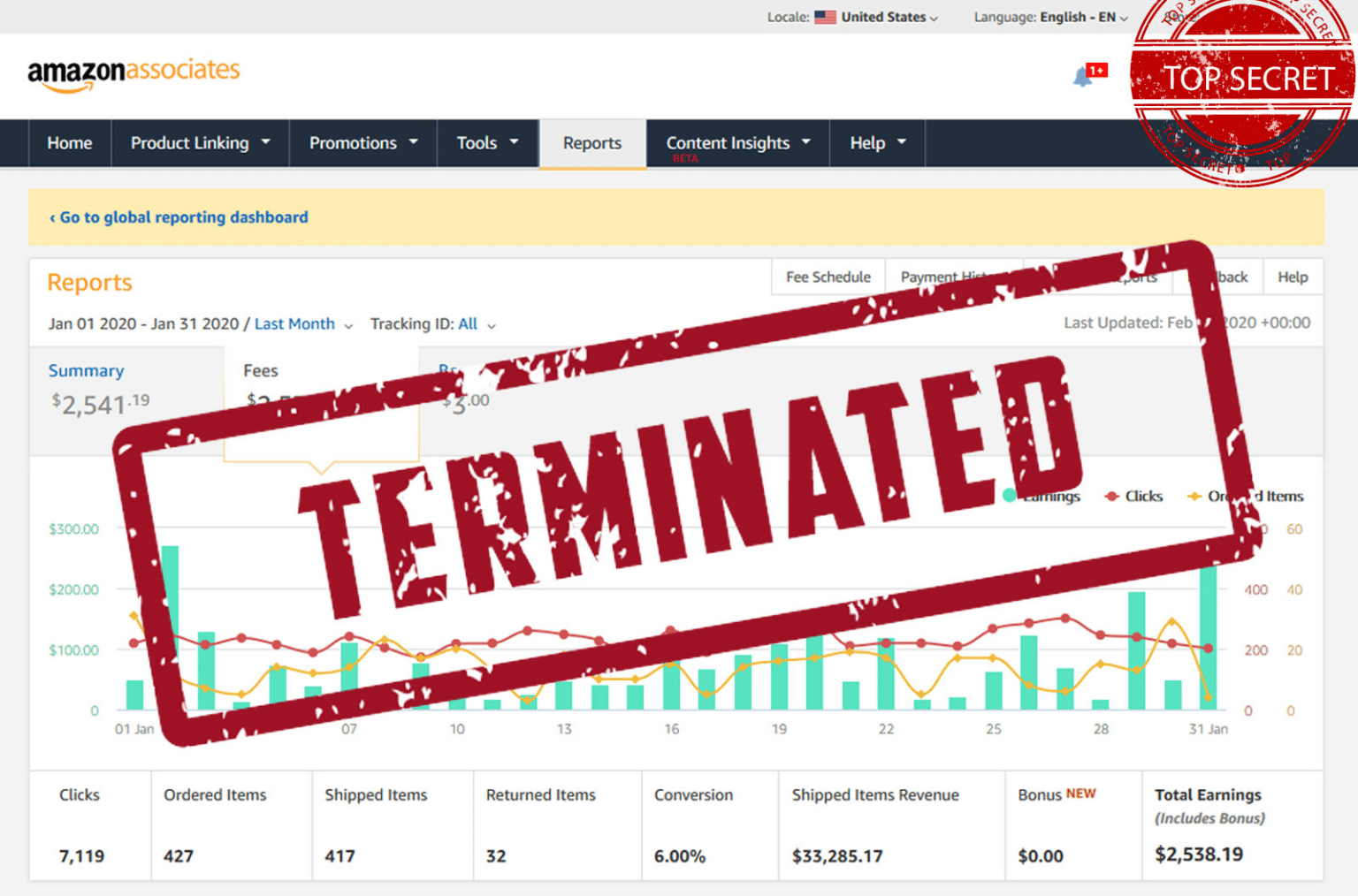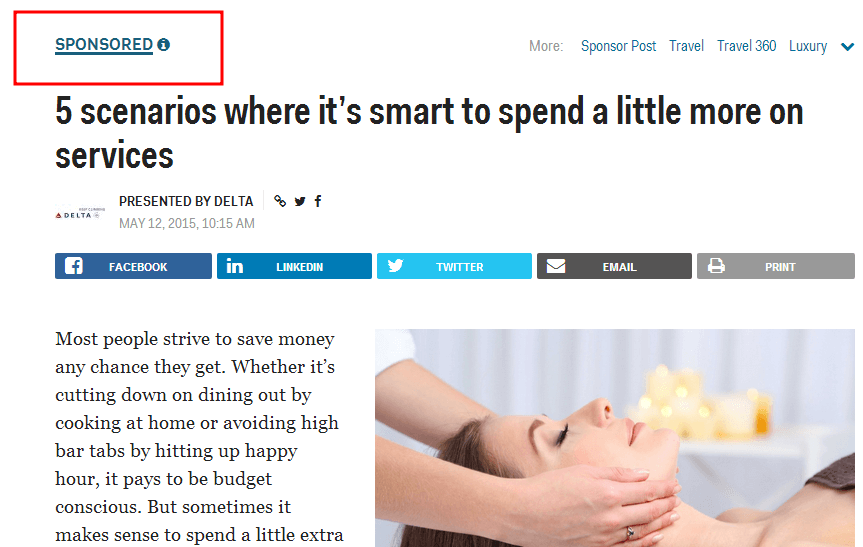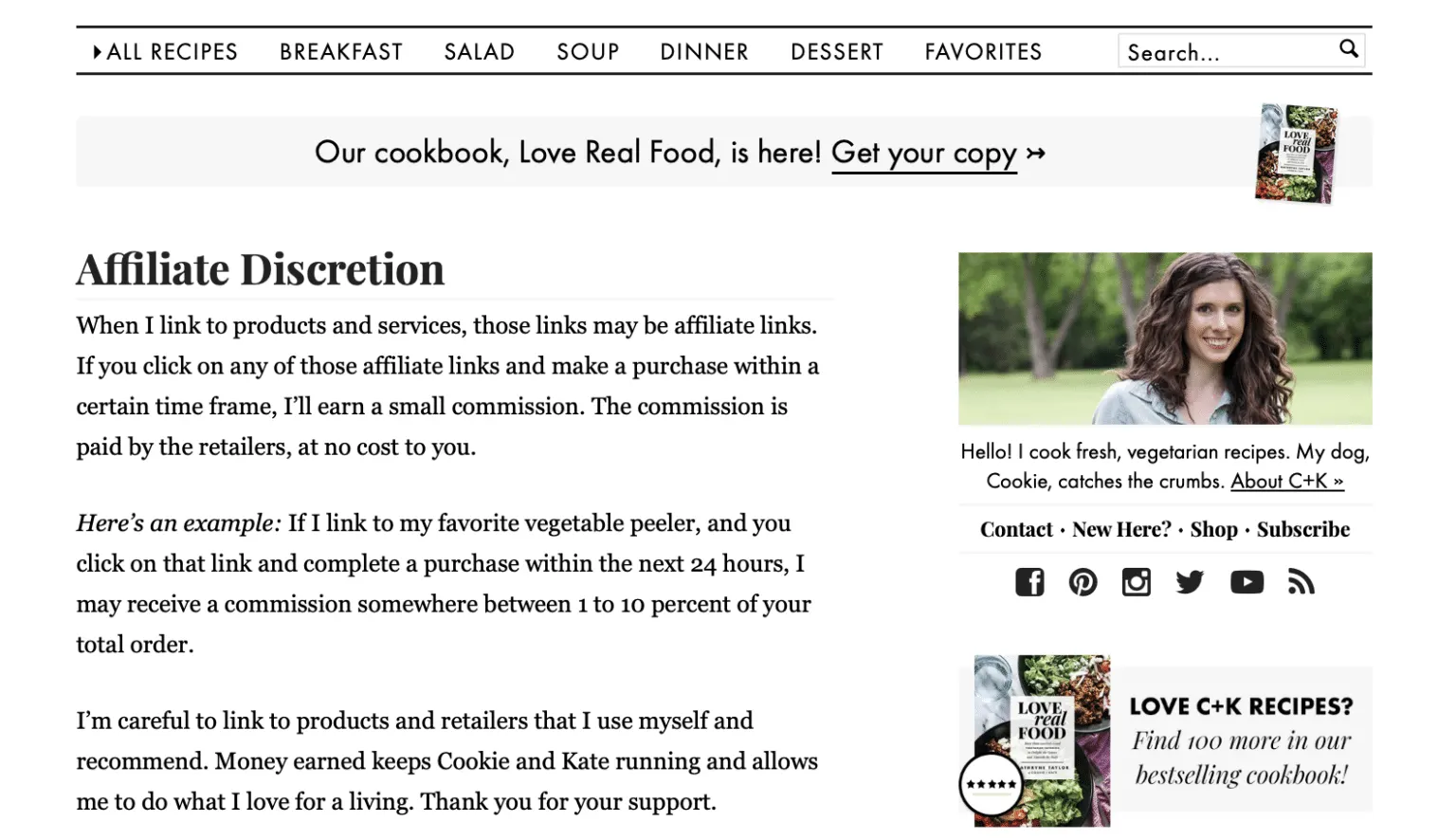How to Disclose Affiliate Links Transparently and Build Loyal Audiences

I still remember the first time I made an affiliate sale of $13.42. It felt like I’d cracked some secret code to making money online. But then, reality hit me. A friend messaged me saying, “Wait, you’re earning money when I buy stuff through your links?” The excitement fizzled. It wasn’t because they didn’t want to support me, they just felt blindsided. That’s when I learned a golden rule of affiliate marketing: transparency isn’t optional.
Disclosing affiliate links isn’t just about ticking a legal box. It’s about trust and building a connection with your audience that says, “Hey, I’ve got your back. I’ll never recommend something I don’t believe in.” Done right, it can turn casual readers into loyal supporters who want you to succeed.
So, how do you share your affiliate links in a way that feels honest, keeps people coming back, and doesn’t feel awkward? In this post, you’ll learn how to disclose affiliate links transparently to build trust and grow a loyal audience. Let’s talk about it. “Affiliate Marketing for Dummies” is my go-to recommendation guide for this topic.
Key Takeaways
- Transparency in affiliate marketing fosters trust and compliance with legal requirements.
- Clear disclosures can increase audience engagement and purchase likelihood.
- Utilizing various placements for disclosures helps ensure visibility and effectiveness.
- Maintaining a consistent approach to disclosures reinforces credibility.
- Simple language in disclosures enhances audience understanding and trust.
- Examples from successful brands illustrate the benefits of transparency in affiliate disclosures.
Understanding the Importance of Affiliate Link Disclosures
Affiliate link disclosures are the foundation of a transparent and trustworthy relationship with your audience. Think of them as your way of saying, “Hey, I might earn a commission if you buy this product, but I’m recommending it because I genuinely think it’s worth your time.” When you approach it this way, people respect your honesty and are more likely to trust your recommendations.
1. Building Trust with Your Audience
Trust is everything in marketing. These days, most people research before making purchases, and they’re quick to spot anything that feels insincere.
Studies even show that audiences engage 25% more with creators who are open about affiliate links. Being upfront about earning commissions doesn’t drive people away, it actually pulls them in. Your honesty becomes your superpower.
2. Staying Legally Compliant
Beyond trust, let’s talk about the rules. Disclosing affiliate links isn’t optional but a legal requirement. The Federal Trade Commission (FTC) takes it seriously, and not following their guidelines can lead to fines or worse. Plus, most affiliate programs (we’re talking 95%) explicitly require proper disclosures.
So, playing by the rules doesn’t just protect your audience but also protects your business.
3. Promoting Ethical Marketing
When you’re transparent about your partnerships, it’s a win for everyone. People love brands and creators who are upfront, with studies showing that 70% of consumers prefer businesses that prioritize openness.
This kind of transparency can boost your credibility by as much as 61%. In the long run, fairness and honesty aren’t just good practices, they’re what make your business stand out.
Affiliate link disclosures aren’t something to dread, they’re an opportunity. They help build stronger connections with your audience, keep you legally secure, and enhance your reputation as an ethical, credible creator. It’s a small step that makes a massive difference.
What Are Affiliate Link Disclosures?
Affiliate link disclosures are a way to be transparent with your audience about your connections to the products or services you promote. Think of them as a quick “heads-up” that lets people know you might earn a commission if they make a purchase. It’s not just about honesty but trust too.

For example, here is my affiliate disclosure policy.
Breaking Down Affiliate Links
In a simple explanation, affiliate links are unique URLs that track when someone makes a purchase through your recommendation.
If a sale happens, you earn a cut of it. It’s a fair way for marketers to monetize their hard work, but here’s the thing, your audience deserves to know how it works. Being upfront about your affiliate ties shows integrity and keeps the relationship with your followers strong.
Understanding FTC Guidelines
The Federal Trade Commission (FTC) has clear rules about affiliate links: you must disclose if you’re getting paid to promote a product or service. These disclosures need to be visible and easy to understand with no sneaky fine print. Adding a clear notice near your affiliate link ensures your audience knows exactly why you’re recommending something.
Why does this matter? For one, transparency helps you build credibility, and audiences are more likely to trust your recommendations when they know you’re being open. But it’s also about protecting yourself.
Ignoring FTC guidelines can lead to steep fines or even suspension from affiliate programs, and your account can be terminated immediately. so following the rules isn’t optional, it’s essential.

Affiliate link disclosures aren’t just about compliance; they’re about fostering trust and fairness in your marketing efforts. That trust is what keeps your audience coming back for more.
How to Disclose Affiliate Links Transparently
Being upfront about affiliate links is the foundation of trust and a must for staying on the right side of the rules. Clear disclosures help your audience understand the relationship between you and the products or services you’re promoting. Here’s how to get it right:
Keep It Clear and Straightforward
The FTC emphasizes that disclosures need to be simple, honest, and easy to understand. Avoid jargon or vague language. Instead, say something like, “I may earn a commission if you purchase through these links.” (just like it’s shown on mine above) It’s short, clear, and tells your audience what they need to know. This openness not only keeps you out of legal trouble but also shows your commitment to fair marketing practices.
Smart Placement is Everything
Where you put your disclosure is just as important as what you say. Ideally, it should be impossible for your audience to miss. Place disclosures close to affiliate links, at the beginning of blog posts, or in headers or sidebars where they’re always visible. The goal is transparency, not making people hunt for the information.
Being open about your affiliate ties earns your audience’s trust and loyalty. When people see you’re honest about what you earn, they’re more likely to stick around, trust your recommendations, and even support your efforts.
| Disclosure Element | Best Practices | Examples |
|---|---|---|
| Language | Use clear and simple language | “(paid link)”, “#ad” |
| Visibility | Position disclosures prominently | At the top and bottom of articles |
| Context | Integrate seamlessly into content | Close to affiliate links or endorsements |
By following these tips, your disclosures will be both legal and effective. This way, you promote open affiliate marketing.
Best Practices for Affiliate Marketing Disclosure
Nailing your affiliate disclosures is how you build genuine trust with your audience. Being upfront makes your content more credible and strengthens relationships. Let’s break down the best ways to do it.
Use Simple, Straightforward Language
The key here is clarity. Your audience shouldn’t have to guess what you mean. Forget the industry jargon; keep it casual and real. Something like, “This post contains affiliate links, and I may earn a small commission at no extra cost to you,” works wonders. Studies show that about 90% of online shoppers prefer buying from affiliates who are transparent, so this approach pays off.
Make Your Disclosure Pop
Your audience shouldn’t have to search for your disclosure. Highlight it using bold text, larger fonts, or even a different color. It’s not just about compliance, it’s about standing out. Research shows that visible disclosures can lead to a 25% higher click rate, proving that trust and visibility go hand in hand.
Stay Consistent
Every time you share an affiliate link, include your disclosure. No exceptions. Consistency not only keeps you transparent but also boosts conversions. In fact, being clear about commission structures can increase audience engagement and even bump conversion rates by 15%.
When you keep your disclosures simple, visible, and consistent, helps you earning trust, clicks, and loyalty. That’s the kind of strategy that turns audiences into long-term supporters.
Summary:
| Best Practice | Description | Impact |
|---|---|---|
| Using Simple Language | Ensure clarity by using straightforward terms. | Improved audience relationships and increased engagement. |
| Highlighting the Disclosure Statement | Utilize distinct colors and larger fonts for visibility. | Higher click-through rates and enhanced trust. |
| Frequency of Disclosures | Include disclosures with each affiliate link presentation. | Increased conversion rates and reinforced audience trust. |
Transparent affiliate marketing practices avoid legal complications and foster a sustainable business model.
You can make your platform more open and trustworthy by incorporating these best practices. This leads to more success in affiliate marketing.
Disclosing Sponsored Content
It’s important to know how to share sponsored content to keep your audience’s trust. Sponsored content is made to promote a product or service, often paid for by a brand. Learning the best ways to handle sponsored content is crucial for digital marketing success.
What Constitutes Sponsored Content?
Sponsored content is when a company pays someone to promote their products or services. This can be in blog posts or social media. It’s not just right, but it’s also the law, thanks to the Federal Trade Commission (FTC).

The FTC says you must tell people about any deals that might affect what you’re promoting.
Best Practices for Disclosing Sponsored Posts
Being clear about sponsored content is key. Use words like “sponsored,” “paid partnership,” or “advertisement” clearly in your posts. This shows any money involved and keeps your audience’s trust.
The FTC suggests putting these notices near affiliate links or at the start of your content. It’s also important to avoid using vague terms like “affiliate” because not everyone gets it. Following these guidelines helps build a genuine community around your brand.
Being open about sponsored content not only meets legal standards but also makes your audience trust your advice. This is key for your brand’s success in digital business.
Utilizing Tools for Effective Affiliate Content Disclosures
As affiliate marketers, it’s key to follow disclosure rules to keep trust and stay legal. Using the right tools makes this easier. It helps you keep your affiliate disclosures up to date.
WordPress Plugins for Disclosure Management
WordPress has plugins to help with affiliate link management. Pretty Links, WPCode, and ThirstyAffiliates make adding disclosures automatic. These tools keep your site organized and follow the Federal Trade Commission’s rules.
- Pretty Links: Features advanced auto-linking that transforms keywords into affiliate URLs automatically.
- ThirstyAffiliates: Manages and organizes affiliate links, helping you maintain clarity in disclosures.
- WPCode: Offers a custom shortcode capability, allowing you to insert affiliate disclaimers easily.
FTC Disclosure Generator Tools
FTC disclosure generator tools help create compliant statements for different situations. They make sure your disclosures are clear and easy to see. It’s important to put disclosures where they’re most visible, like at the top of a page.
Using these tools saves time and makes your affiliate marketing more transparent. This is crucial for building trust with your audience.
Using these tools right keeps you compliant and builds trust with your audience. Clear and honest affiliate disclosures are key to success in affiliate marketing.
Examples of Transparent Affiliate Disclosures
Looking at examples of clear affiliate disclosures helps us see what works best. Brands and influencers who are open about their partnerships win over their audience. They do this by being upfront about their affiliate deals.
Successful Brands and Influencers
Many brands are doing a great job with their affiliate disclosures. TechRadar puts theirs right at the top, so everyone sees it. This builds trust and shows they’re open about their partnerships.
Dan Flying Solo also puts his disclosure at the start of his blog posts. This way, readers know about affiliate links before clicking on them. The Beauty Look Book is honest about earning commissions from affiliate links. This shows they value honesty and clarity.
Popular Science finds a good balance. They mention possible affiliate deals without affecting their honest reviews.
Impact of Transparency on Audience Engagement
Being open has a big impact on how much people engage with content. Research shows that creators who share sponsored content build more trust and credibility. This is good for their audience numbers.
Influencers who mix product promotion with clear disclosures get more real interactions and sales. Successful brands prove the power of honesty by showing how they handle affiliate disclosures.
How to Write Effective Affiliate Links Disclaimer
Writing an affiliate links disclaimer is key for both following the rules and gaining your audience’s trust. A good disclosure makes your promotions clear and follows the law. Let’s look at how to write in a way that feels real and how to make your disclosures personal.
Creating Authenticity in Your Disclosure Language
Using your voice is crucial when writing about affiliate links. Phrases like “As an Amazon Associate, I earn commission from qualifying purchases” are clear and direct. This kind of language helps build trust with your readers, making them feel safe with your recommendations. It also meets the FTC’s guidelines.
Tips for Crafting a Personal Touch in Disclosures
Share your own experiences or insights about the products you promote. This helps connect with your audience and gives context to your endorsements. It’s important to put disclosures near affiliate links so they’re easy to find. You can place them in the header or footer of your site. Adding a personal touch not only follows the rules but also increases engagement, as studies show.

| Disclosure Tips | Details |
|---|---|
| Clear Language | Avoid jargon and ensure the disclosure is easily understood by the average consumer. |
| Visible Placement | Place disclosures near affiliate links or prominently within content for better visibility. |
| Personal Insights | Share experiences to create a connection and enhance authenticity. |
| Concise Examples | Use simple phrases like “#ad” or “#CommissionsEarned” for clear disclosures. |
| Compliance | Follow FTC guidelines to avoid penalties or removal from programs. |
Over 50% of consumers are more likely to trust an affiliate marketing recommendation if a disclosure is visibly present.
Maintaining Consistency in Affiliate Link Disclosure
Being consistent is key to making sure your audience knows about your affiliate ties. By following a set routine in your disclosures, you meet legal standards and strengthen your bond with your audience.
Standard Formatting for Disclosures
Using the same format for disclosures makes your content look professional. It helps your message stand out, making it clear to your readers. In fact, research shows that clear affiliate disclosures can boost your conversion rate by 31%.
This method improves how you communicate, leading to more engagement and trust from your audience.
Establishing a Routine for Disclosures
Having a regular routine for disclosures is crucial for your success. Regular updates keep you in line with the law and best practices. Studies show that consistent disclosure can cut legal risks by up to 50%.
This approach not only protects your business but also builds loyalty and trust in your brand.
Conclusion
In affiliate marketing, being transparent isn’t just something you should do, it’s how you earn real trust and loyalty. When you’re upfront about using affiliate links, it shows your audience you value honesty more than just making a sale. It’s not just about following the rules; it’s about making your recommendations feel genuine and trustworthy.
Loyalty doesn’t happen overnight, but being open with your audience gets you there faster. When people see that you’re authentic, they’ll stick around, not just for your content, but because they trust you.
So, keep it real, stay consistent, and focus on building that connection. At the end of the day, transparency and reputation is vital for your business.
Frequently Asked Questions
What is an affiliate link disclosure, and why is it important?
An affiliate link disclosure is a statement that lets your audience know you may earn a commission if they make a purchase through your link. It’s important because it builds trust, ensures transparency, and helps you comply with legal regulations like FTC guidelines.
Where should I place affiliate disclosures on my website?
Place disclosures where they are easy to notice. Ideally, include them near the affiliate links, at the top of blog posts, or even as a note in your video descriptions. The goal is to make sure your audience sees the disclosure before clicking any affiliate links.
What should I say in my affiliate disclosure?
Keep it simple and clear. For example: “This post contains affiliate links. If you purchase through these links, I may earn a commission at no extra cost to you.” Avoid vague language that could confuse your audience.
Do I need to disclose affiliate links on social media?
Yes, disclosures are necessary on social platforms too. Use phrases like #ad, #affiliate, or a brief explanation in your caption to let followers know about the affiliate nature of your post. Make sure it’s visible and not buried in a sea of hashtags.
How often should I include affiliate disclosures?
You should include a disclosure every time you share an affiliate link, whether it’s in a blog, a video, or a social media post. Repeating it ensures transparency, especially for new or first-time visitors to your content.
Can transparent disclosures really help me build a loyal audience?
Absolutely! Audiences appreciate honesty, and when they see you being open about your affiliations, it builds trust. Over time, this trust strengthens your relationship with your audience, making them more likely to engage with your content and support your recommendations.






